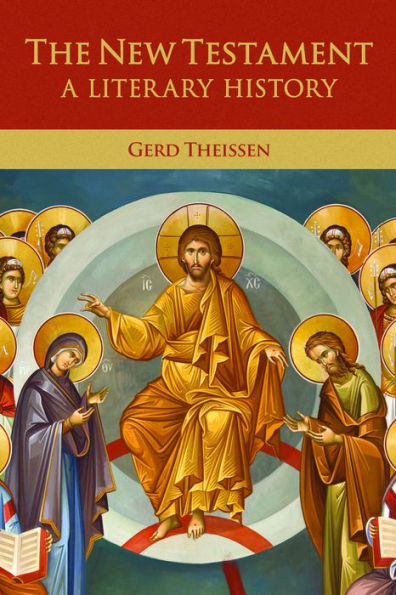Table of Contents
List of Tables and Figures xiii
Preface xv
Introduction: The Problem of a Literary History of the New Testament 1
Part 1 The Twofold Beginnings of a History of Early Christian Literature
A The Charismatic Beginnings of Gospel Literature in Jesus
1 The Oral Prehistory of Early Christian Literature with the Historical Jesus
The Beginning of the History of Early Christian Literature 19
Beginnings of Oral Tradition with the Historical Jesus? 21
Three Tradents of the Jesus Tradition after Easter 25
The Formal Language of Jesus' Proclamation 27
2 The Sayings Source Q
The First Written Form of the Jesus Tradition 32
The Structure of Q 34
The Time of Q's Origins 36
The Tradition-Critical and Theological Location of Q 37
The Genre of Q: A Prophetic Book and More? 40
3 The Gospel of Mark
The Second Written Form of the Jesus Tradition 43
The Structure of Mark's Gospel 43
Time and Place of Mark's Gospel 48
Genre: A Biography with a Public Claim 53
B The Charismatic Phase of Paul's Epistolary Literature
4 The Historical Conditions for Paul's Letters 61
5 The Pre-Pauline Oral Tradition 64
Jesus Traditions in Paul 64
Pre-Pauline Christological Formulae 67
6 The Pauline Letter as Literary Form 69
The Form-Critical Location of Paul's Letters: Models 69
Development from Letter of Friendship to Community Letter by Means of Liturgical Stylization 74
Development from Letter of Friendship to Community Letter by Means of Rhetorical Stylization 78
7 The Sequence and Development of the Pauline Letters 82
8 The Collection of Paul's Letters 94
The Sequence of Paul's Letters 94
Attestation of Paul's Letters 95
The Place Where Paul's Letters Were Collected 99
Part 2 The Fictive Self-Interpretations of Paul and Jesus: The Pseudepigraphic Phase
9 Pseudepigraphy as a Literary-Historical Phase in Early Christianity 105
Early Christian Pseudepigraphy between Jewish and Hellenistic Cultures 109
Early Christian Pseudepigraphy between Oral and Literary Cultures 110
Early Christian Pseudepigraphy between Educated Authors and Uneducated Addressees 112
Open Pseudepigraphy in Early Christianity? 113
10 Paul's Fictive Self-Interpretation in the Deutero-Pauline Writings 116
The Eschatological Theology of 2 Thessalonians 117
The Cosmic Wisdom Theology of Colossians and Ephesians 118
The Theology of Office in the Pastorals 121
Paul's Fictive Self-Correction in the Deutero-Pauline Letters 123
Excursus: The Correction of Paul by the Catholic Epistles
11 Jesus' Fictive Self-Interpretation through the Redaction of the Jesus Traditions in the Synoptic Gospels 130
The Gospel of Mark 132
The Gospel of Matthew 134
The Gospel of Luke and the Acts of the Apostles 143
12 Jesus' Fictive Self-Interpretation through the Transformation of the Jesus Traditions in the Gospels Associated with Gnosis 155
The Gospel of John 156
The Gospel of Thomas 165
The Gospel of the Egyptians 167
13 Jesus' Fictive Self-Interpretation through the Continuation of the Synoptic Jesus Tradition in the Jewish-Christian Gospels 168
The Gospel of the Nazareans 169
The Gospel of the Ebionites 169
The Gospel of the Hebrews 170
14 Jesus' Fictive Self-Interpretation through the Harmonizing of the Jesus Tradition in Other Apocryphal Gospels 171
The Egerton Gospel 171
The Gospel of Peter 172
The Unknown Berlin Gospel 173
Part 3 The Authority of the Independent Forms: The Functional Phase
15 The Independent Differentiation of Partial Texts and Tendencies 179
Preaching 179
Congregational Order 180
Collections of Sayings 180
Secret Teachings of Jesus 180
Historical Writing 181
Apocalypses 181
16 The Acts of the Apostles 184
17 The Revelation to John 189
18 The Letter to the Hebrews 195
Part 4 The New Testament on Its Way to Becoming a Religious World Literature: The Canonical Phase
19 Canon as a Means to Stability Based on Compromise and Demarcation 205
The Four-Gospel Canon 211
Canonical Collections of Letters 216
Canonical Clusters of Gospels and Other Genres 218
The Septuagint as Canonical Model 220
A Canonical Edition of the New Testament in the Second Century? 222
Establishment of a Canon as a Recognition of and Limitation on Plurality 225
20 Extra-Canonical Literature Provides Flexibility 237
New Creations by New Charismatic Authors 238
New Creations in the Form of Additional Pseudepigraphic Writings 241
New Creations through Multiplication of Functional Genres 248
New Creations as Metacanonical Texts 250
Concluding Observation 253
Notes 260
Bibliography 291
Index 302



